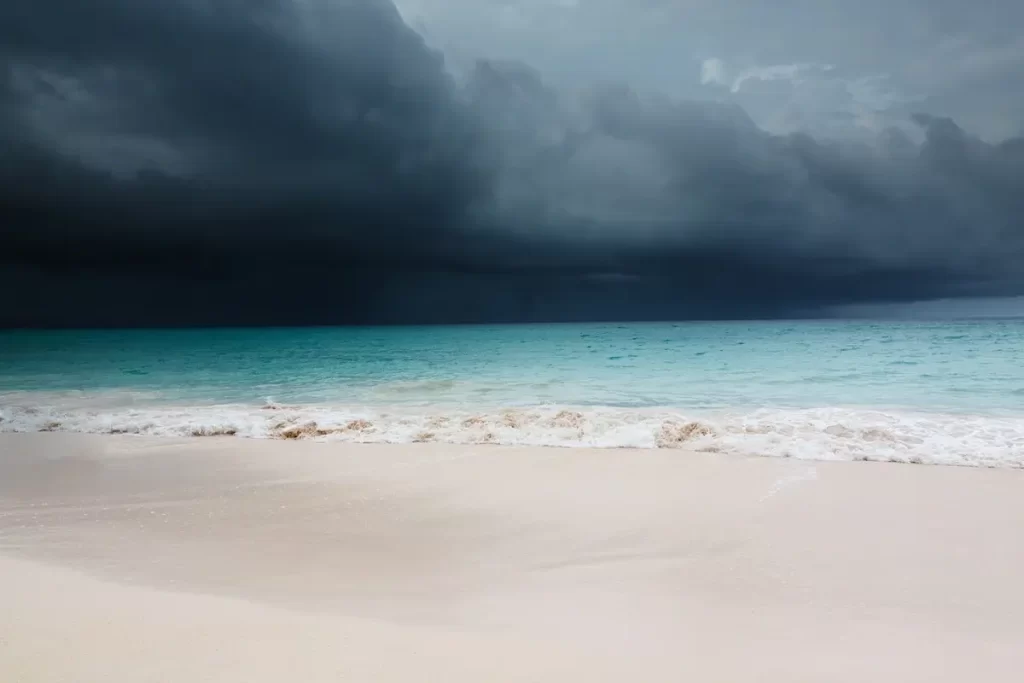Disclosure: Floridian Roots is reader-supported. We may earn an affiliate commission when you buy through links on our site. Learn more.
Living in Florida means staying prepared for hurricane season is crucial. With storms often heading your way, knowing how to stay safe is essential. Make sure your gas tanks are at least half full and keep your electric vehicle’s battery charged between 50-80% to ensure you can evacuate without facing long lines or power issues.
Bringing in all outdoor items such as furniture and decorations can prevent dangerous debris during strong winds. Checking your evacuation route and having an emergency kit ready are key steps before the storm hits. Staying informed about the latest weather updates ensures you can make timely decisions to secure your safety.
When the storm approaches, deciding whether to stay or leave can be tough. Those who haven’t yet evacuated should consider doing so as conditions worsen. Finding a safe and sturdy place to stay minimizes risks during the hurricane’s peak.
Understanding Hurricanes in Florida
Florida is frequently impacted by hurricanes, as its location makes it vulnerable to these powerful storms. Knowing the different categories of hurricanes and the timeline of the hurricane season is essential for preparation and safety. Each element plays a significant role in understanding how to protect yourself and your property.
Hurricane Categories and Risks
Hurricanes are classified into categories based on their wind speeds. This range includes five categories. Category 1 starts at 74 mph winds, which can cause some damage to structures and trees. With each increase in category, the potential for damage and flooding rises. Category 5 can exceed 157 mph, leading to catastrophic structural damage and severe flooding.
Understanding these categories helps you gauge the storm’s potential impact. It also emphasizes the importance of preparing adequately for each level. Hurricanes, tropical cyclones, tropical storms, and tropical depressions carry their own risks, but hurricanes especially are known for their destructive power in Florida. By grasping these concepts, you can better plan for necessary precautions.
The Timeline of Hurricane Season
Hurricane season in Florida generally spans from June 1 to November 30. Peak activity often occurs between August and October. During this time, the formation of tropical storms and cyclones is more frequent due to the warm waters and atmospheric conditions.
Staying informed and tracking weather updates is crucial. Resources like the National Hurricane Center provide forecasts and warnings during this period. Awareness of the timeline allows you to plan your preparedness efforts effectively. This includes creating safety plans and gathering necessary supplies in anticipation of potential storms affecting the area.
Emergency Preparedness Plan
Being ready for a hurricane involves having an effective emergency plan. Key aspects include crafting a family emergency plan to ensure everyone knows what to do, and pinpointing nearby shelters for safety.
Creating a Family Emergency Plan
Start by discussing potential emergency scenarios with your family. Identify roles for each person to ensure a smooth response during a hurricane. It is crucial for everyone to know the evacuation route and have a designated meeting place outside the affected area.
Develop a communication plan in case family members get separated. Choose a reliable contact outside your local area as a central point of communication. Remember to include emergency supplies like food, water, flashlight, batteries, and first aid kit in your plan. This kit should be packed in a sturdy container and kept in an easily accessible location. Regularly review and update your family emergency plan, adjusting it as necessary to accommodate any changes in family dynamics or needs.
Locating Nearby Shelters
Identifying the location of nearby shelters is essential for your safety. The Florida Division of Emergency Management provides resources to help find shelter locations. Familiarize yourself with the shelters in your area before a hurricane hits.
Check which shelters can accommodate special needs or pets if necessary. Not all shelters have these capabilities. It’s also a good idea to know the backup shelters in case your first choice is full or inaccessible. Remember to have directions to the shelters printed out or saved on your phone in case internet access is unavailable. Keeping this information handy ensures swift action when a hurricane warning arises.
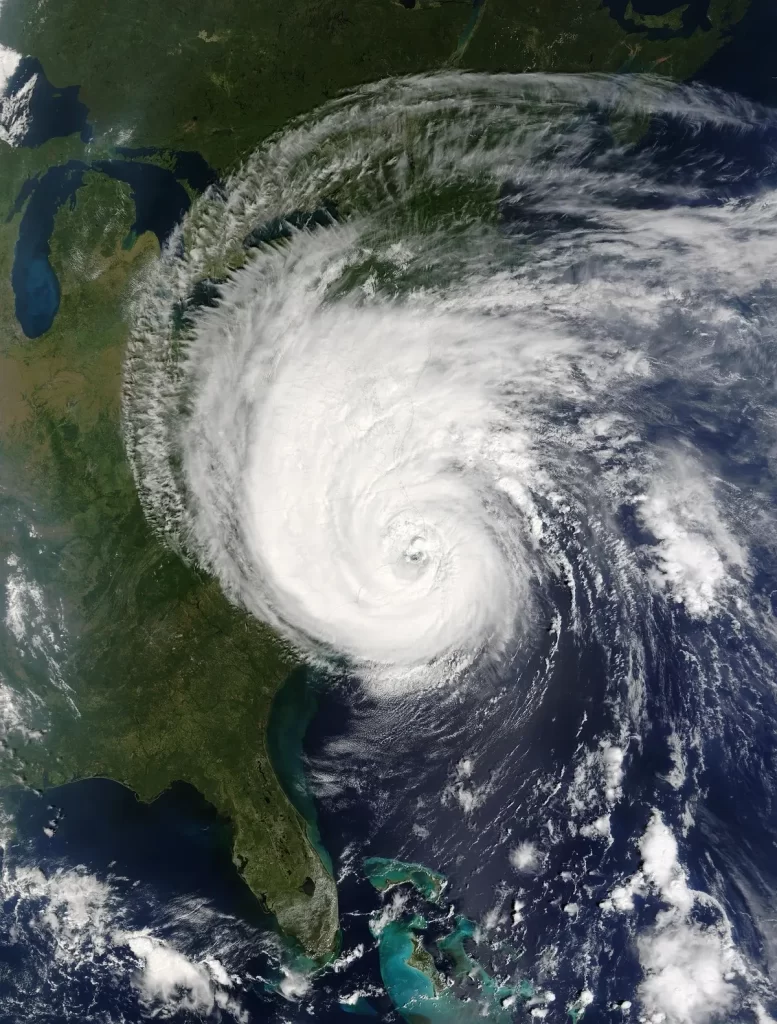
Securing Your Home
To prepare your home for a hurricane, it’s important to focus on two key areas: protecting your windows and ensuring proper drainage. Both steps reduce the risk of significant damage during severe weather.
Installing Storm Shutters
Installing storm shutters is one of the most effective ways to protect windows from storm damage. These robust barriers help shield your glass from debris carried by high winds. Popular options include aluminum panels, roll-down shutters, and plywood. Aluminum panels are lightweight and easy to install, offering good protection. Roll-down shutters provide convenience, allowing for quick deployment when necessary.
Plywood is an affordable, temporary solution, but should be at least 5/8 inches thick to be effective. During installation, ensure the shutters cover the entire window frame and are securely attached. For more information on hurricane proofing doors and attaching shutters to sliding glass doors, refer to the FEMA guidelines.
Maintaining Rain Gutters
Proper maintenance of rain gutters is crucial for managing water flow during heavy rain. Keep them clear of leaves, dirt, and debris to prevent blockages that could lead to water pooling and flooding. Regular inspections help make sure there are no signs of rust or damage that might compromise function.
Ensure downspouts direct water away from your home’s foundation to minimize the risk of basement flooding. Gutter guards can also be helpful, preventing debris from clogging the system. For comprehensive information, the State of Florida’s hurricane readiness guide provides additional tips on maintaining structures before storms hit.
Evacuation Procedures
When a hurricane approaches, it’s important to know what evacuation procedures to follow. Knowing what evacuation orders mean and the routes available will help keep you safe.
Understanding Evacuation Orders
Evacuation orders are issued during a hurricane watch or warning to protect you and your family. A hurricane watch means that conditions are possible, while a warning means conditions are expected. Follow the instructions from local officials when they tell you to evacuate. Orders may vary based on the strength of the hurricane and your proximity to danger zones.
It’s key to listen to local authorities through radio, TV, or official websites. They will inform you about which zones need to evacuate. If you’re in a high-risk area, leave as soon as possible. Delaying could put you at risk. Prepare a go-bag with essentials like water, food, medications, and important documents.
Identifying Evacuation Routes
Before a hurricane hits, know your local evacuation routes. These paths are typically marked by signs and lead you to safety. Get familiar with multiple routes in case one is blocked. Maps are available on county websites or at local emergency management offices.
Check the latest information on road conditions and traffic updates as you evacuate. Heavy traffic is common, so plan to leave early. Remember to keep your gas at least half full to prevent problems on your route. If you own an electric vehicle, ensure the battery is charged between 50-80% to avoid issues.
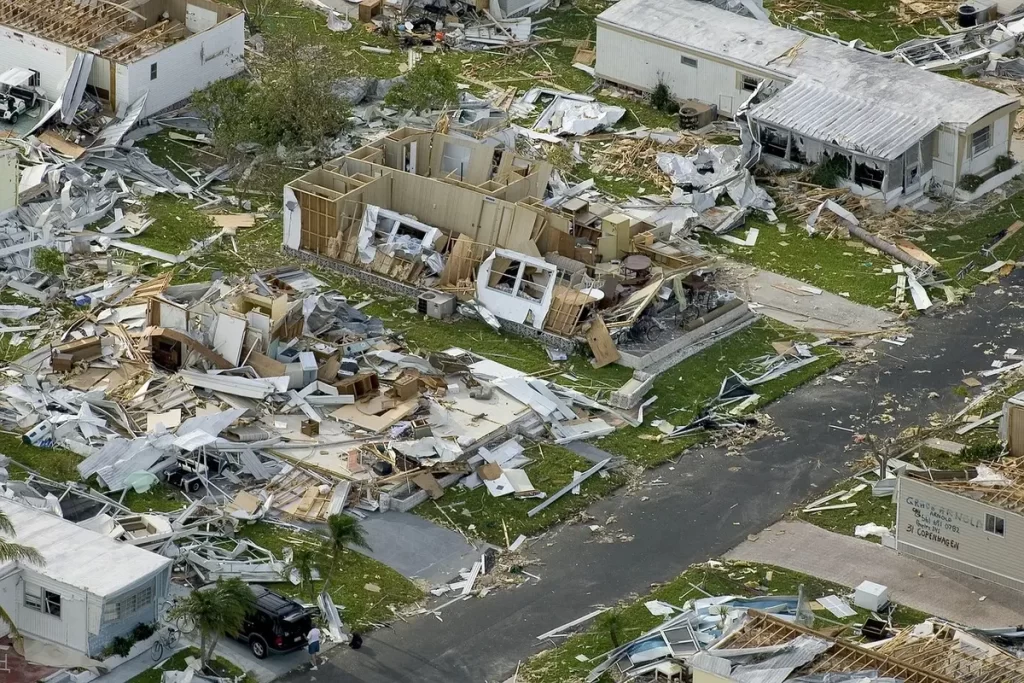
Handling Flooding Risks
When facing hurricanes in Florida, dealing with flooding is often a critical concern. Floodwaters, storm surge, and heavy rain can pose significant threats, from property damage to personal safety. Being prepared and knowing how to react can make a big difference.
Preventing and Responding to Floodwaters
Floodwaters can rise quickly during a hurricane. Ensure your home is prepared by sealing any gaps and installing flood barriers if needed. Keep a supply of sandbags to place around doorways and other entry points. It’s crucial to keep important documents and valuables in waterproof containers.
During the storm, avoid walking or driving through flooded areas. Just six inches of moving water can knock you down, and a foot can sweep away vehicles. Listening to updates from local authorities will help you stay informed about which roads are impassable. Always prioritize your safety and that of your family.
Seeking Higher Ground
When a hurricane brings heavy rain and storm surge, seeking higher ground can be essential. Know the safest routes to elevated areas in your vicinity and plan how to get there quickly if necessary. In some situations, evacuating to a predetermined shelter might be the best option.
Identify safe spots in advance, especially if you live in areas prone to flooding. Remember that upper floors in homes or buildings may provide temporary refuge, but be mindful of potential hazards like broken glass or structural damage. If you need to leave your home, have an emergency bag ready with essentials such as food, water, and medications.

Survival Kit Essentials
To be prepared for a hurricane in Florida, you need a well-stocked emergency kit. Make sure you have enough food and water, necessary medical supplies, and key documents and tools to ensure your safety during the storm.
Food, Water, and Medical Supplies
You should have at least three to five days’ worth of non-perishable foods for each person in your household. This includes canned goods, granola bars, and dried fruits. Don’t forget a manual can opener. Water is also vital; aim for one gallon per person per day.
Medical supplies are crucial. Have a basic first aid kit with bandages, antiseptics, and pain relievers. Include prescription medications you may need, as well as any necessary medical equipment. It’s wise to pack personal hygiene items like soap and hand wipes, too.
Important Documents and Tools
Keep your important documents safe and handy. This includes identification, insurance policies, and bank records. Place them in a waterproof container to protect against damage from water.
Essential tools during a hurricane might include flashlights, batteries, and a portable phone charger. A battery-operated weather radio can keep you updated on storm conditions. Don’t forget a multipurpose tool, which can be useful for a variety of tasks.
It’s also a good idea to have waterproof bags for storing small items and keeping them dry. These tools and documents will be vital if you need to evacuate or handle emergencies during the storm.
Responding to Weather Warnings
Understanding how to effectively handle weather warnings can help keep you and your loved ones safe during severe storms. Being prepared for hurricanes and tornadoes is crucial to minimizing risks.
Staying Informed During Severe Weather
Keep multiple forms of communication active. Download a reliable weather app to get real-time updates on conditions like rain bands and storm paths. Sign up for emergency alerts on your phone through government channels. A battery-powered or hand-crank radio can be invaluable when power outages strike and mobile networks fail.
Establish a communication plan with family members. Ensure everyone knows a safe location to meet if you’re separated. Follow social media accounts of local authorities and the National Weather Service for timely updates. Trust official sources over rumors or unverified information to make informed decisions.
Preparing for Hurricanes, Tornadoes, and Typhoons
Create a hurricane preparedness plan that includes essentials like water, non-perishable food, and a first-aid kit. Ensure your home is ready by securing windows with storm shutters or plywood.
Identify safe rooms in your home, such as a basement or interior room, to use during tornadoes. Practice evacuation routes with your family, considering options that avoid flooded roads.
Pack a go-bag with clothing, important documents, and needed medications. Ensure you have a list of emergency contacts and local shelter locations. Keep in mind that hurricanes can create tornadoes, so be prepared for quick changes in weather conditions. Proper planning can reduce the risk of harm when severe weather strikes.
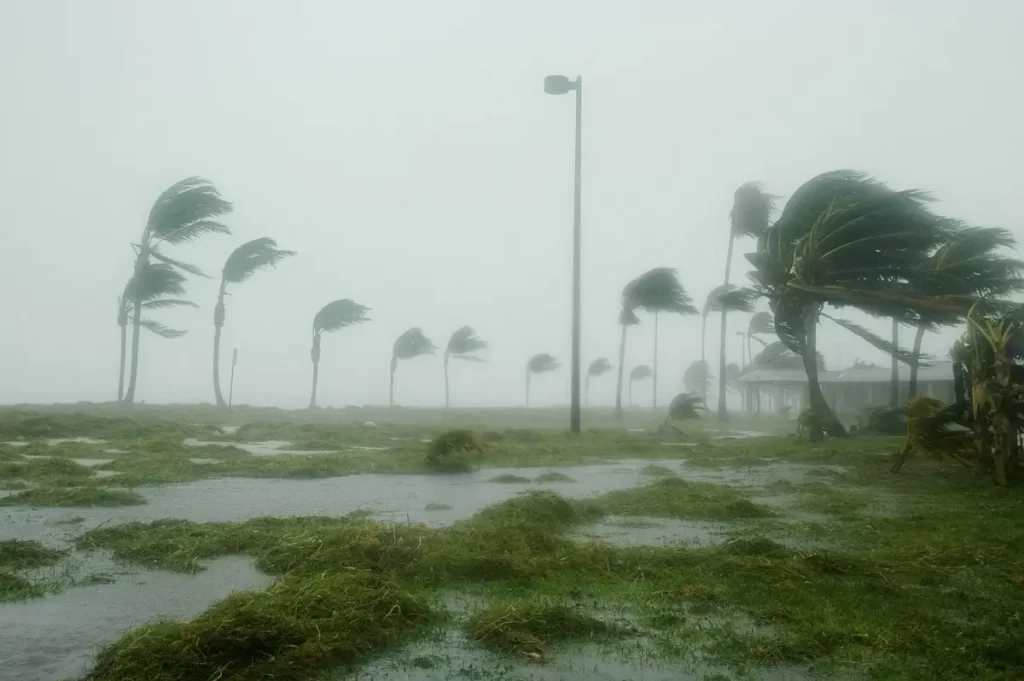
Post-Hurricane Safety and Recovery
After a hurricane passes, your primary focus should be assessing damage and ensuring safety. It’s important to approach recovery carefully and reach out for available assistance to aid the process.
Assessing and Repairing Damage
Begin by checking your home and surroundings carefully. Look for structural damage, such as cracks in the foundation and damage to the roof or walls. If you see significant damage, don’t enter until it’s deemed safe by a professional. Check gas lines, electrical installations, and plumbing for any issues.
Wear protective clothing, such as gloves and boots, when cleaning debris. Use tools cautiously and ensure that any sharp objects are disposed of properly. Avoid wading through floodwaters, as they can conceal sharp debris or be contaminated.
For damaged utilities, contact professionals. Avoid attempting repairs on electrical lines or gas, as it could be dangerous. Pay attention to any announcements made by local authorities or emergency services for guidance on safe practices.
Reaching Out for Assistance
Recovering from a hurricane is hard, and you don’t have to do it alone. Look for local and federal resources such as FEMA, which provides essential aid. Contact the Red Cross, as they often offer emergency shelter, food, and health services. Make sure to keep all relevant documents organized for insurance claims or aid applications.
Reach out to family and friends for additional support. Many communities offer volunteer services to help residents recover. Stay updated through local news to learn about available resources and assistance programs. Remember, seeking help is a crucial step in a smooth recovery process.
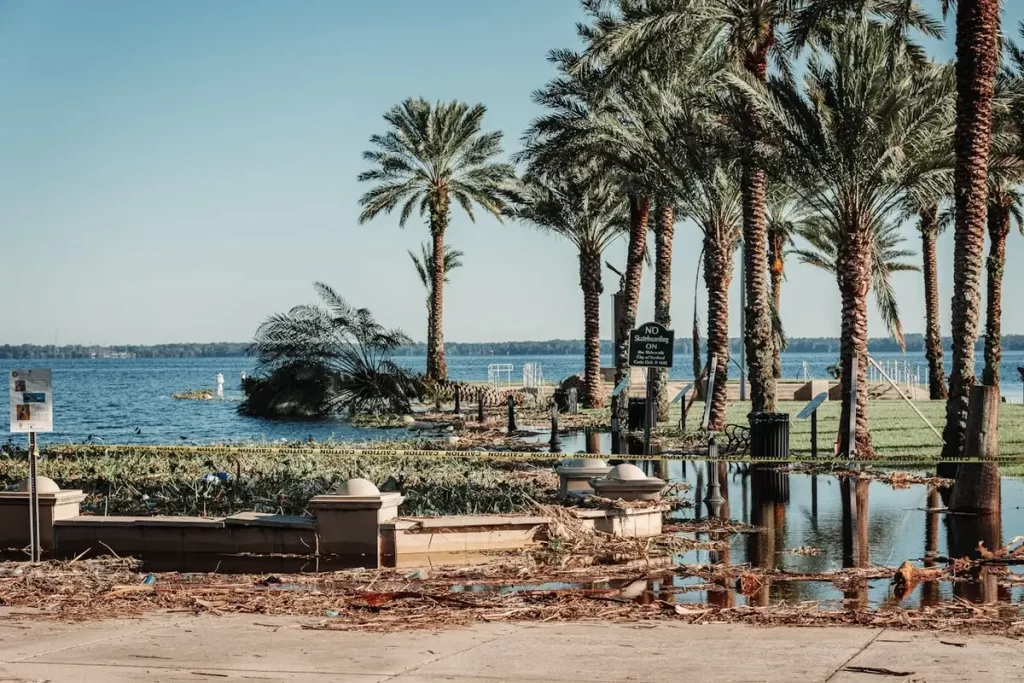
Frequently Asked Questions
When preparing for a hurricane in Florida, focusing on essential items for your checklist, ensuring children’s safety, and understanding post-storm actions is crucial. Avoid common mistakes and track storms effectively.
What should I include in my hurricane preparation checklist?
Your checklist should have water, non-perishable food, flashlights, batteries, a first-aid kit, and important documents. Don’t forget to include any necessary medications and supplies for pets. A battery-operated radio is also essential for receiving updates.
How can I protect my children and ensure their safety during a hurricane?
Keep your children informed about the plan and involve them in preparations. Create a safe space in your home away from windows. Pack a bag with their favorite toys, books, and any necessary medications to keep them comfortable and occupied.
What are the critical steps to take immediately after a hurricane hits?
After a hurricane, check for injuries and ensure everyone is accounted for. Avoid downed power lines, and be careful of debris when moving outside. Listen to local authorities for updates and instructions. Document property damage with photos for insurance claims.
What are some common mistakes to avoid when a hurricane is approaching?
Don’t wait until the last minute to evacuate if instructed. Avoid neglecting communication by keeping your phone charged and checking in with friends or family. Stock up early on supplies and gas. Never disregard warnings from local authorities.
Can you list essential survival tips to follow during a hurricane?
Stay indoors and away from windows during the storm. Instead of using candles, make use of flashlights instead to prevent fire hazards. Follow local emergency updates on a battery-powered radio. Keep your emergency kit accessible in case you need to evacuate quickly.
What is the best way to track hurricanes as they develop?
Track hurricanes using reliable sources like the Florida Disaster website or the National Hurricane Center. These sources provide real-time updates and forecasts. Mobile apps and weather alerts can also help you stay informed.
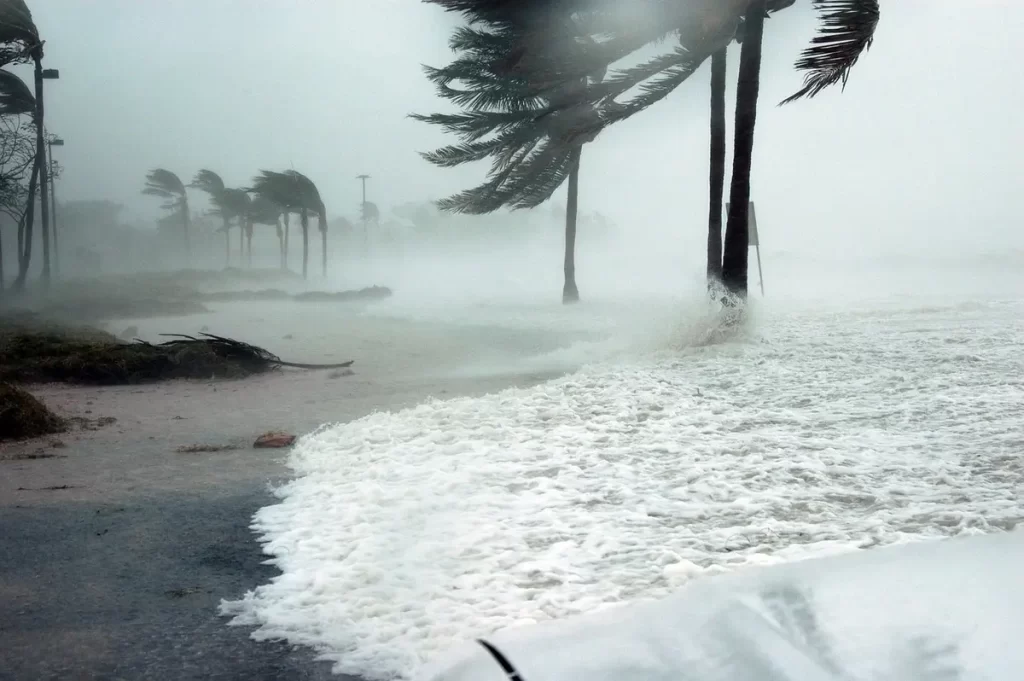

Hello everyone! My name is Kimberly, and I was born in Florida. Although I have travelled to a lot of other places outside of Florida and the country, this is the place I still call home. A fun fact about me is that I was a performer at both Walt Disney World and Universal Orlando Resort for a total of 8 years.

